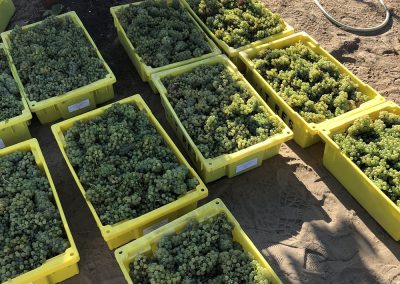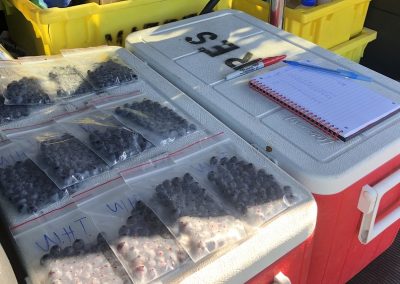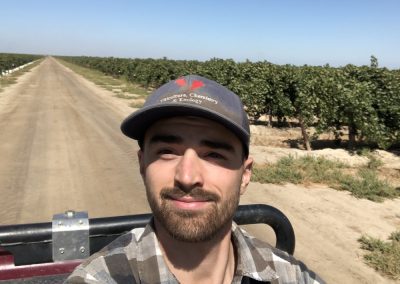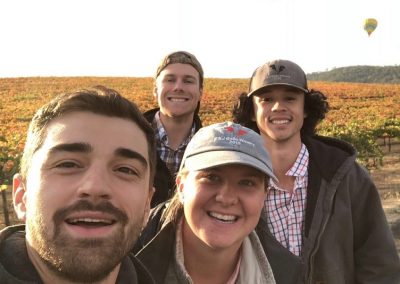By Pietro Previtali
It is suddenly the end of May 2019 in Adelaide; fieldwork is over, the lab is over filled with grape samples collected throughout the season and the best use of them has to be made to avoid wasting the work of a whole season. I am sitting there, guarding my single berries and exploring the changes in their chemical composition as they progressively undergo changes in their color and sugar concentration that will lead to the optimal quality for winemaking.
June 2019 comes and I wake up in the hot Central Valley of California, where I had the opportunity to work closely with research scientists at E. & J. Gallo Winery during the 2019 USA vintage. It is a new world, and it is exactly as it is pictured in the movies. I think about the quote “Everything is bigger in America” and – here I am! A little Italian coming from Australia and working for the biggest wine company in the world.
As the season progresses I very quickly become familiar with many experiments at different locations along the coast and valleys of California. I am helping researchers to discover how to increase grape quality in different environments, how to tailor irrigation based on the needs of single vines and predict maturity and vineyard yields using innovative techniques. This has greatly increased my understanding of current challenges for grape growers and will help to increase the relevance of my project for the wine industry.
During my 6-month placement at E. & J. Gallo Winery, I had the opportunity to be involved in a vibrant environment where research is used to increase wine quality and profitability. I was able to set up vineyard trials to investigate the effect of a slower or faster ripening on the composition of grapes at maturity and the quality of the resulting wines. This knowledge is of great interest to the wine industry because of the acceleration of grape maturation induced by climate change. This faster ripening and earlier maturation leads to a decoupling of important grape traits; more sugars which increases a wine’s final alcohol content, and less flavor molecules, together result in unbalanced wines.
At two different locations in the San Joaquin Valley, I applied different crop load and irrigation regimes to Riesling and Cabernet Sauvignon vines. During the season, I monitored the effect of these treatments on vine physiological performance, ripening rate and grape composition. Wines were made from grapes that had ripened at different rates, with some wines made from faster maturing grapes and others with slower maturing grapes. These wines are now being analysed for their wine chemistry and sensory profiles to see if wine quality increases as a result of a slower ripening process.
I must acknowledge the endless support of our industry partner Nick Dokoozlian and numerous E. & J. Gallo Winery staff that made this placement possible and I am extremely grateful for all the help and resources they made available for me to work on my project. Similarly, I am thankful to my supervisors and the Australian Research Council Training Centre for Innovative Wine Production, for setting up this collaboration and supporting my stay in the US. I enjoyed everything of my first trip to California, from the hard work in the vineyards and lab, to plenty of memorable times with new friends, exploring new places, experiencing the real American life and of course tasting some wines.
See you soon California!
Pietro Previtali is a PhD student in the Australian Research Council Training Centre for Innovative Wine Production at The University of Adelaide.
Pietro’s research aims to identify strategies that will allow grape-growers to produce fruit with high levels of desirable flavor compounds, while maintaining concentrations of sugar that will result in moderate levels of alcohol in the finished wine.







